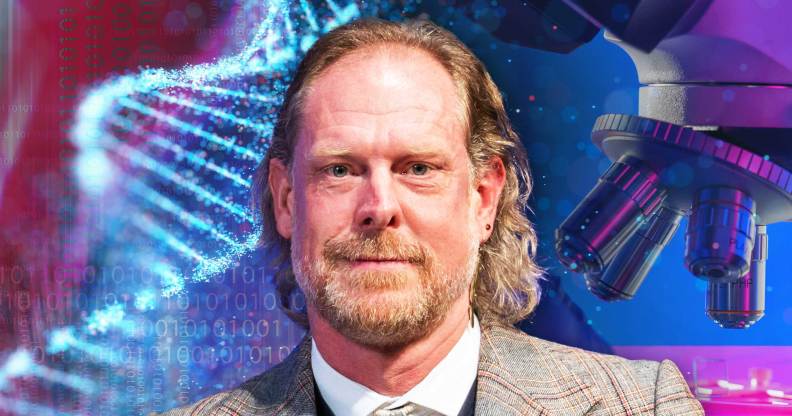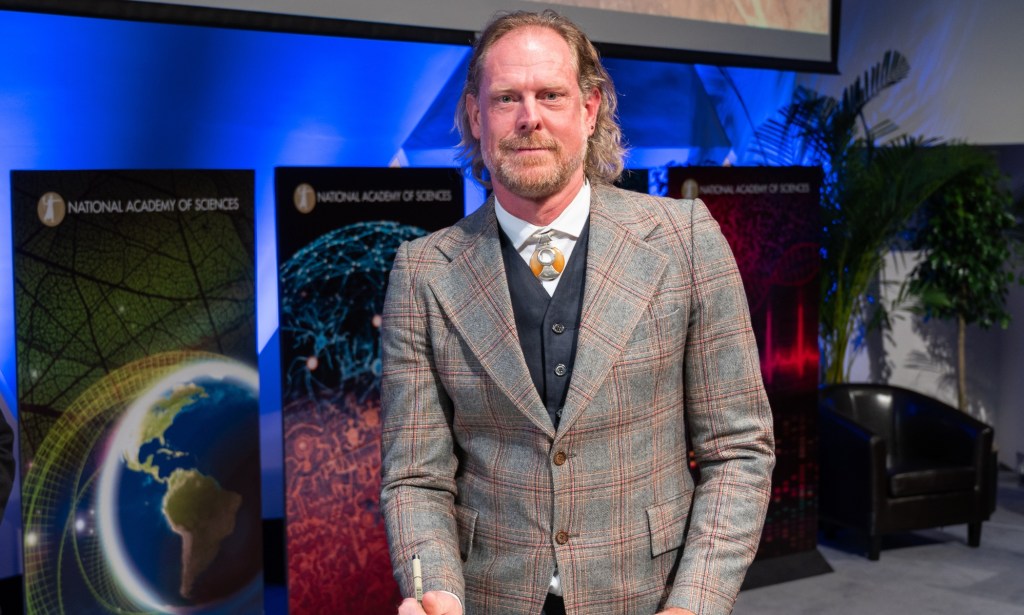Queer Cambridge professor on why a lack of diversity is ‘unhealthy for science’

Cambridge university’s Professor Giles Oldroyd believes a lack of diversity can lead to “narrow” thinking in STEM. (Giles Oldroyd/Getty Images/PinkNews)
PinkNews speaks to Professor Giles Oldroyd from the University of Cambridge to talk about queer diversity and broadening perspectives within the academic world of science, technology, engineering and mathematics (STEM).
The STEM industries – especially in academia – are often associated with underrepresentation for minority groups. While there have been active steps to include visibility for women, racial and ethnic minorities, the LGBTQ+ community remains largely ignored.
There are few statistics highlighting the LGBTQ+ experience in STEM, but data from the Royal Society found that 40 per cent of people working in science are women, and 60 per cent are men. However, there is no mention of non-binary individuals.
While there is a lack of tangible data, estimates suggest that the LGBTQ+ community are at least 20 per cent less represented in STEM than expected.
For Professor Giles Oldroyd, professor of Crop Science at the University of Cambridge, the easiest way to describe his queer experience starting out in research labs is “lonely.”

“When I was doing my PhD, there was another student in the same lab who was also gay,” Prof Oldryod tells PinkNews over a Zoom call from his office.
“Otherwise, within the student body, there wasn’t anybody I knew who was LGBT.”
Oldroyd is one of the few out queer scientists who has been inducted into both the prestigious Royal Society of Scientists in the UK, and the National Academy of Sciences in the United States.
He says it wasn’t until he arrived at Cambridge that he was surrounded by other LGBTQ+ scientists, and currently, he is seeing an increase in young LGBTQ+ people becoming lecturers.
“Trying to sort of juggle these two separate worlds and two separate identities.”
Professor Giles Oldroyd
While working towards his PhD and then post-doc work in California at the University of Berkeley and then at Stanford, Oldroyd never separated his queer identity from his academic work. It wasn’t until he started to progress in his career that his personal identity began to fragment from his professional one.
“I think there was a very significant period especially as I’m establishing myself internationally, where I was not really being vocal about my sexuality and not expressing it in a professional context.”
“I was living two separate lives,” he continues. “I think it was really having a negative impact on my mental health – trying to sort of juggle these two separate worlds and two separate identities.”
After leaving an organisation where he encountered bullying and discrimination, he found his way to the University of Cambridge. It was there where Oldroyd began to live his authentic self both in his personal and professional life.
“I think sitting half in the closet wasn’t helping me and it wasn’t helping my community at all,” he admits, “because there was no visibility of my queer identity to the general world and certainly within my field of plant sciences.”
“I think people like myself, can be more proactive to facilitate that change.”
Professor Giles Oldroyd
Like other industries and sectors, a diversity of thought leads to more innovation, and within STEM sectors, that innovation could lead to potential scientific breakthroughs. Yet, Oldroyd believes that there is “a narrow sector of society, particularly in leadership.”
He continues: “It facilitates a community that is conforming to that narrow sector of thinking and motivation. I think it’s unhealthy for the community and it’s unhealthy for science.”
Oldroyd believes that there is a place for creativity within science, and diversity within STEM will add to that creative spirit.
“Something that I bring to the community that’s different because of my queer identity is thinking a little bit more outside the box than I see other people doing.”
Given the current narrow sector within STEM leadership, Prof Oldroyd thinks that as he sees more young LGBTQ+ entering science, the change is slowly happening.
“I think people like myself, can be more proactive to facilitate that change,” he says.
Prof Oldroyd reluctantly agrees that being labelled as a role model is part of his experience given his position at the University.
“I like the idea of supporting or creating space within STEM that allows a broader diversity of people – including LGBTQ people – to come and be part of this scientific community,” they conclude.
“That’s really important to me.”
How did this story make you feel?

